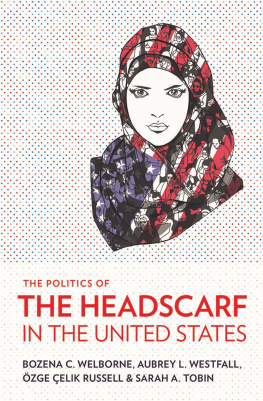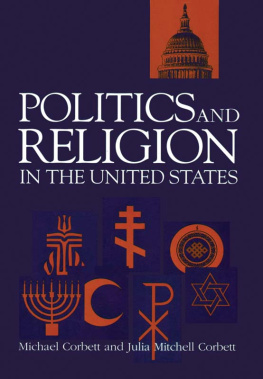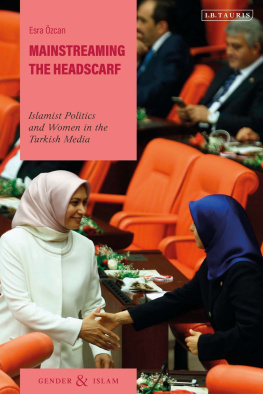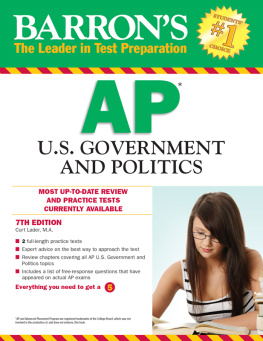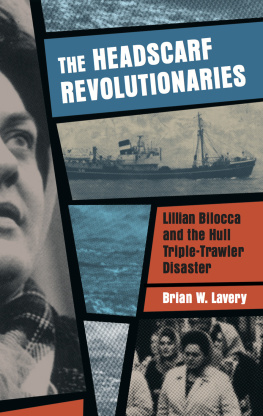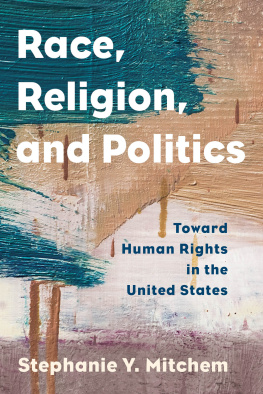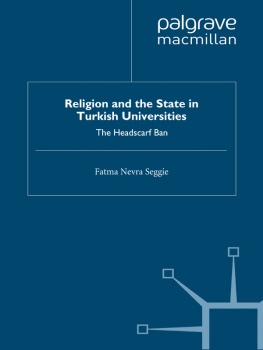A CKNOWLEDGMENTS
This book would not have been possible without the help of many people. We owe the deepest debt of gratitude to the Muslim women who participated in our survey and focus groups. Because we refer to them by pseudonyms in order to keep their identities confidential, we are unable to name them. They should know, however, that their thoughtful insights are the heart of the book. We were outsiders in their communities, yet we found ourselves welcomed with kindness and generosity. We are so grateful that they were willing to share their thoughts and experiences. They enriched the book and our lives.
The seed of the idea of this book was planted when most of us were finishing graduate school. As this work progressed, a number of friends and colleagues at many different institutions offered various forms of intellectual and emotional support and encouragement. We are grateful to the many members of our academic departments and writing groups who provided encouragement and insight along the way. Special thanks to Jonathan Brumburg-Kraus, Bill Eubank, Peony Fhagan, Bojana Fort-Welborne, Susanne Martin, Simon McPherson, Kathy Morgan, Robert Ostergard, Tristy Vick-Majors, and Cindy Westfall, all of whom read and provided feedback on parts of the manuscript and this project. We are especially thankful for Susan Clarkes mentorship. Susans was the first opinion we sought with questions on the substance of our work, on advice pertaining to manuscript negotiations, and on insights into the difficulties of collaboration. She always urged us not to undervalue our work and to be ambitious in our expectations.
The faculty and staff at various institutions provided us with the time, space, and finances to complete this project. Smith College; the University of Nevada, Reno; Virginia Wesleyan College; and Wheaton College all provided grants to cover the costs associated with distributing the survey, conducting focus groups, transcription, and editing the manuscript. We also relied on the help of Georgetown University, Loyola University in Chicago, the University of Houston, and the University of California at Berkeley for help in setting up and hosting the focus group interviews. In particular, we thank Aminah McCloud and Farid Senzai for connecting us to relevant Islamic organizations and research participants, as well as helping us brainstorm and formulate some of the ideas presented in this book. Finally, we offer a special thanks to Hannah Harder, who painstakingly transcribed our interviews, and to Rudy Leon for her work copyediting the manuscript.
We owe a great deal to the reviewers of our book chapters and of the related articles that appear in the journals Politics and Religion and Social Science Quarterly. They offered us useful feedback, which helped shape the content of the book and the interpretation of the findings. The insights of Paul Djupe were particularly valuable. We are also thankful to the participants and discussants in panels at the Midwest Political Science Association and the American Political Science Association conferences, who offered feedback on our preliminary results as well as encouragement to continue with the project.
We were privileged to work with Jim Lance, our editor at Cornell. Jim was our cheerleader as we were writing the manuscript, and he bolstered our confidence in every interaction. Throughout the process, he would send us thoughts and articles that connected to our work, constantly affirming the importance and timeliness of the research. He cheerfully and graciously provided feedback whenever we asked and was patient with our questions. It was a joy to have such an encouraging, enthusiastic collaborator in our corner.
We cant imagine completing anything worthwhile, let alone this multi-year project, without our families. We are grateful for the love and support of our parents and siblings, who took an interest in the research process and project. We appreciate the tolerance of our partners, who held down the fort during weeks of fieldwork and presentations, many late nights, and over one hundred hours of collaborative phone calls in the early mornings and weekends.
Finally, we are grateful to each other. This work was a collaborative effort every step of the way, and we constantly learned from and alongside each other. High-stakes cooperation challenges the strongest relationships, and we are so pleased to have emerged from this project as better scholars and friends.
Introduction
On a cool December evening in 2015, then-presidential candidate Donald Trump stepped on to a stage in Mount Pleasant, South Carolina, and positioned himself in front of a large banner bearing his campaign slogan Make America Great Again. Above the cheers from the crowd, he read a statement prepared in response to the December second shooting in San Bernardino, California, in which the male shooter was a Muslim American, and the female shooter was a legal immigrant from Pakistan. Trump spoke of Muslims great hatred of America, and he repeated false claims that Muslims around the world affirm violence against the United States and believe legal forms of Shari a law should be implemented in America (Taylor 2015). His rhetoric extended to policy promises as he indicated that he would introduce a registry or database of all Muslims living in the United States, that he would ban Muslims from entering the country, and that he was open to surveillance of Muslim communities and warrantless searches of mosques.
While Trumps statements were met with immediate criticism and condemnation, they resonated with a segment of the American electorateone poll of North Carolina voters estimated that among self-identified Trump voters, 67 percent support the creation of a national database of Muslims, 51 percent want to close mosques, and 44 percent believe that Islam should be illegal in the United States (Public Policy Polling 2015). Such opinions are not limited to hard-core Trump supporters. A later YouGov poll found that a majority of Americans support the idea of a registry and also found strong support for enhanced surveillance of Muslim neighborhoods (Hussain 2016). These high levels of public support suggest that the American public would countenance Trumps policy proposals.
It was therefore unsurprising when, following the election of Donald Trump nearly a year later, Muslim women took to Twitter to report they feared wearing the headscarf in public (Markovinovic 2016). The Muslim-American human rights advocate Alaa Basatneh observed that its no longer safe to walk on the streets with a headscarf (Richmond 2016). Her fear and the fear of other Muslim women was well founded: hate crimes against Muslims spiked in late November 2016, emboldened by the perception of support for anti-Muslim vigilantism. Covered women are the most identifiable Muslims, placing them in the crosshairs of Trumps ethnonationalistic ideology and making them inadvertent and unwilling political symbols.
This book explores the politics of the headscarf in the United States and argues that the politicization of the practice occurs almost exclusively in the social rather than the institutional sphere. For the women who participated in our research, the act of head covering is not explicitly politically motivated, nor is it regulated through American governmental institutions. However, wearing the headscarf accentuates Muslim identity, which carries significant social and political costs for Muslim-American women and for the communities to which they belong. The headscarf functions as a symbolic boundary marker in that it identifies a religious individual, differentiates between Muslim communities, and serves as a point around which women create personal Such boundaries can create opportunities for engagement and social enrichment, but they can also form the basis of discriminatory practices, depending on who is engaged in the work of boundary construction. In other words, the head covering is not always a boundary itself, but it is a marker around which others (including covered women) create boundariessome people will use the headscarf as a symbol around which to create a community, and others will see it as something that signals difference and conflict.

